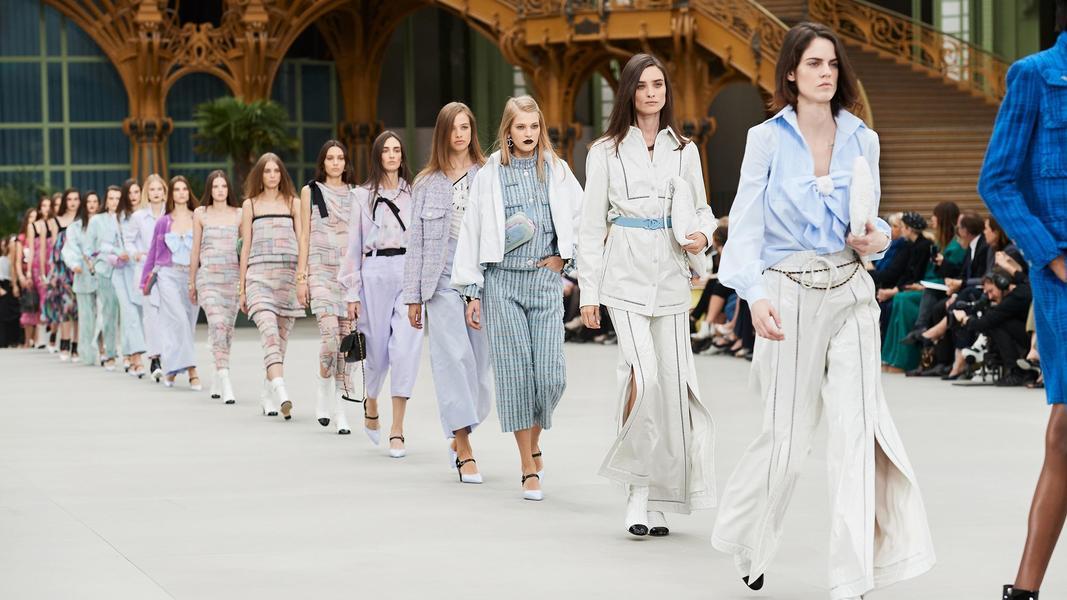Making Luxury Goods Sustainable: 3 Challenges and 3 Leaders
by Liam Goldsworthy

You could be forgiven for failing to join the dots between luxury brands and sustainability. How can the latest season’s must-haves be friendly to the planet?
Luxury fashion brands, like all brands, are currently facing the enormous challenge of protecting the wellbeing of employees, customers and supply chain communities during the COVID-19 pandemic, which is affecting key luxury markets across the globe with closures of boutiques and consumer behaviour change prevailing.
Before coronavirus struck, there were – and still are – other challenges keeping brands on their toes, with 2020 tipped to be a pivotal year for the industry in accelerating the agenda. External stakeholder attention has shifted from being exclusively concerned with listed fast fashion brands, to challenging brands who may use less materials, but operate with higher margins and consequently, with little excuse to not do things right. Thankfully, many luxury brands have responded, and in 2020 issues are being addressed with more sophistication, innovation and collaboration than ever before.
Three key challenges that luxury brands are currently grappling with:
1. Climate
Annually, the fashion industry is responsible for about 1,715m tons of CO2 emissions worldwide, which is expected to grow 63 per cent by 2030. It’s hardly surprising that more than eight per cent of global greenhouse gas (GHG) emissions are produced by the apparel and footwear industries.
In 2018, fashion stakeholders created the Fashion Industry Charter for Climate Action, under the umbrella of UN Climate Change, which aims to achieve net-zero emissions by 2050.
Firms including Burberry, Hugo Boss and Guess and others have pledged to implement or support the charter’s principles and targets which include reducing GHG emissions by 30 per cent before 2030 and paving a decarbonisation pathway for the fashion industry using Science-Based Targets Initiative (SBTi) methodologies.
Like many fast fashion brands, Scope 3 (supply chain emissions) is the real challenge, with extensive data and engagement required from supply chain partners to calculate, and then reduce such emissions. Unlike fast fashion brands however, suppliers are typically strategic and longer term – which should in theory make calculation and reduction easier.
2. Waste/Circularity
Sadly, luxury garments from previous collections will not make their way onto websites, or into discount stores which could dilute a luxury brand’s heritage, and the immersive experience of a boutique. This creates issues with how unsold garments/accessories are then handled; how can both brand heritage and the environment be protected simultaneously?
In the UK alone, more than 300,000 tonnes of clothing are sent to landfill every year which adds to the pressure of labels needing to implement solutions. Luxury brands are looking into innovative solutions which; increase product longevity, tighten purchasing practices and crucially enable brands to recycle unsold product.
3. Biodiversity
The biggest impact that the industry can have on biodiversity is loss of habitat, contributed by clothing production. Impacts on biodiversity don’t stop there however; for example,what are the broader ecosystem impacts ofusing snakeskin for a purse? This is of course in addition to big questions around the ethics surrounding use of such niche animal materials.
Less niche materials such as wool and cashmere also causes oil degradation, as intensive use of pesticides reduces biodiversity in soil, while leather and viscose can upset vital ecosystems as deforested land is converted.
Similar to challenges around climate, these issues which reach deep into supply chains and smaller scale agricultural operations, are hard to quantify and thus hard to reduce and mitigate. With the pandemic pushing back key conferences and initiatives driving these efforts, 2021 could shape up to be a big year for this agenda.
Three brands who are innovating to make luxury, sustainable:
1. Chanel
Chanel became carbon neutral last year and is part of the Fashion Pact, a global coalition of companies in the industry committed to common environmental goals.
In March, the brand launched Mission 1.5°, pledging to reduce carbon emissions through sustainability targets by 2030, in line with the 2015 Paris Climate Agreement targets.
The mission is to limit mean global temperature increases to 1.5° Celsius which will see Chanel lower its own carbon footprint as well as within its supply chain, by halving emissions across all operations by 2030.
It will also focus on responsibly sourcing and producing natural raw materials, by investing in new tech and start-ups that focus on raw materials and packaging.
2. Burberry
Another member of the Fashion Pact, Burberry sourced 68 per cent of its cotton through the Better Cotton Initiative (BCI) in 2018/19, aiming to procure 100 per cent of cotton through the BCI by 2022.
The brand has pledged to reduce 95 per cent of its operational emissions by 2022 and its last two runway shows have both been carbon neutral.
It is also creating a Regeneration Fund to support carbon insetting projects; where tree planting projects are carried out directly with the company’s own supply chain. The insetting projects work with communities, help restore ecosystems and promote biodiversity.
3. Gucci (Kering)
Gucci is offsetting all GHGs from its own operations and supply chain with forest conservation projects.
The carbon neutral brand is continuing to source more sustainable raw materials including regenerated nylon, cashmere and ethical gold and has implemented initiatives for sustainable manufacturing and sourcing to cut carbon emissions.
The Fashion Pact member has embedded its long-term sustainability strategy into the brand over the last few years and has become entirely carbon neutral to play its part in tackling climate change.
With 2021 fast approaching, it remains to be seen how the pandemic will impact the ability of the sector to tackle the challenges outlined above. Whilst progress and momentum appear strong on carbon reduction, there’s a long way to go in other areas including understanding and reducing impacts on biodiversity. But, with the strong platforms and coalitions that now exist for the industry to collaborate and innovate at scale, there remains hope that by 2030, the vision for sustainable luxury can be realised.
For more information on how Acre is supporting organisations within the Fashion Pact around topics such as climate, biodiversity and waste, among other corporate sustainability challenges, please get in touch with Liam at liam.goldsworthy@acre.com.

